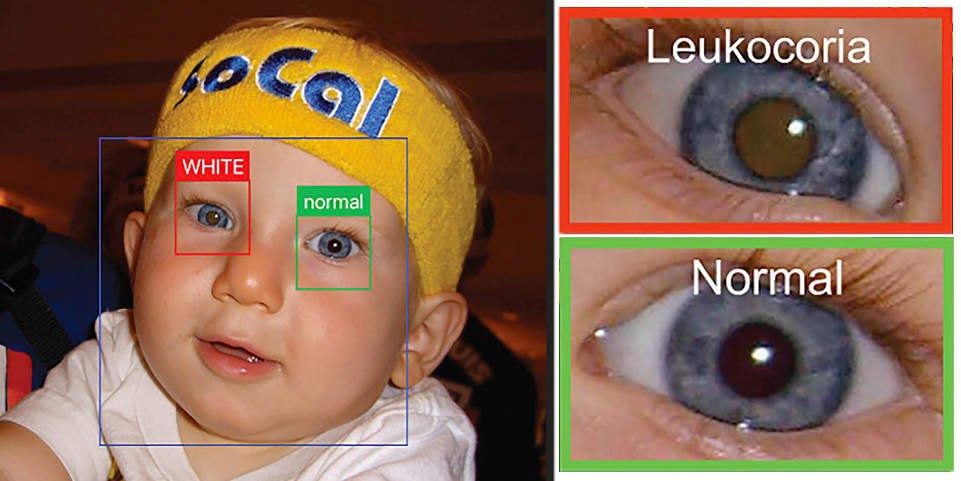Baylor researchers’ app can catch early signs of eye disease in a flash — literally

In 2008, Baylor professor Bryan Shaw’s 4-month-old son lost his right eye to a rare form of cancer (retinoblastoma) that most commonly affects young children. In the process of his son’s diagnosis, Dr. Shaw learned about leukocoria, an abnormal white reflection given off by the retina. (You’re probably familiar with seeing “red eye” in photos, the result of light reflecting on the retinal blood vessels; leukocoria is a sort of “white eye” — and is a sign of retinoblastoma and several other eye conditions.)
Going through old photos, Shaw noticed that he could see this “white eye” effect in photos from when his son was only 12 days old. As it turned out, the signs of cancer were there — the family just didn’t know what it was seeing. Now Shaw (a Baylor chemistry and biochemistry professor) and Dr. Greg Hamerly (a Baylor computer science professor) have created an app that can detect diseases simply by scanning your photos — with the hope of saving future children from losing their sight or even their lives.
Launched several years ago, the app recently passed a big test — a scientific study to determine if the app’s scans can really catch leukocoria. The result? After analyzing 50,000+ photographs of children taken prior to their diagnosis, the app was able to detect leukocoria in 80% of those who received an official doctors’ diagnosis — and on average, it detected the cancer more than a year before the official diagnosis.
“The app can most certainly help children from going blind,” Shaw told Newsweek. “In the case of retinoblastoma, early diagnosis is the key to preserving vision, and life.”
“With retinoblastoma, every month counts,” he continued in another interview. “Tumors grow rapidly, and when you start seeing the white eye, you have about six months to a year before the tumor starts to break up and metastasize down the optic nerve to the brain and kills you.”
The app is not foolproof and still has a 1% false positive rate, but Baylor students are working to retrain the algorithm by tagging and sorting more photos. Shaw noted that, as with any AI program, the app will only get better and smarter the more photos it scans. (Want to help? If you’ve been diagnosed with leukocoria, share your photos here.)
The app can be downloaded for free on Android and iOS devices under the name “White Eye Detector.”
Sic ’em, Baylor researchers!
[Bonus: The lead author on the study, published in the journal Science Advances, was Baylor undergraduate Micheal Munson. His co-authors included Shaw and researchers at Harvard Medical School, the Massachusetts Eye and Ear Infirmary, and the Dana-Farber Cancer Institute. Its results have been covered by such major outlets as Newsweek, NPR’s All Things Considered, Science magazine, and Optometry Today.]

